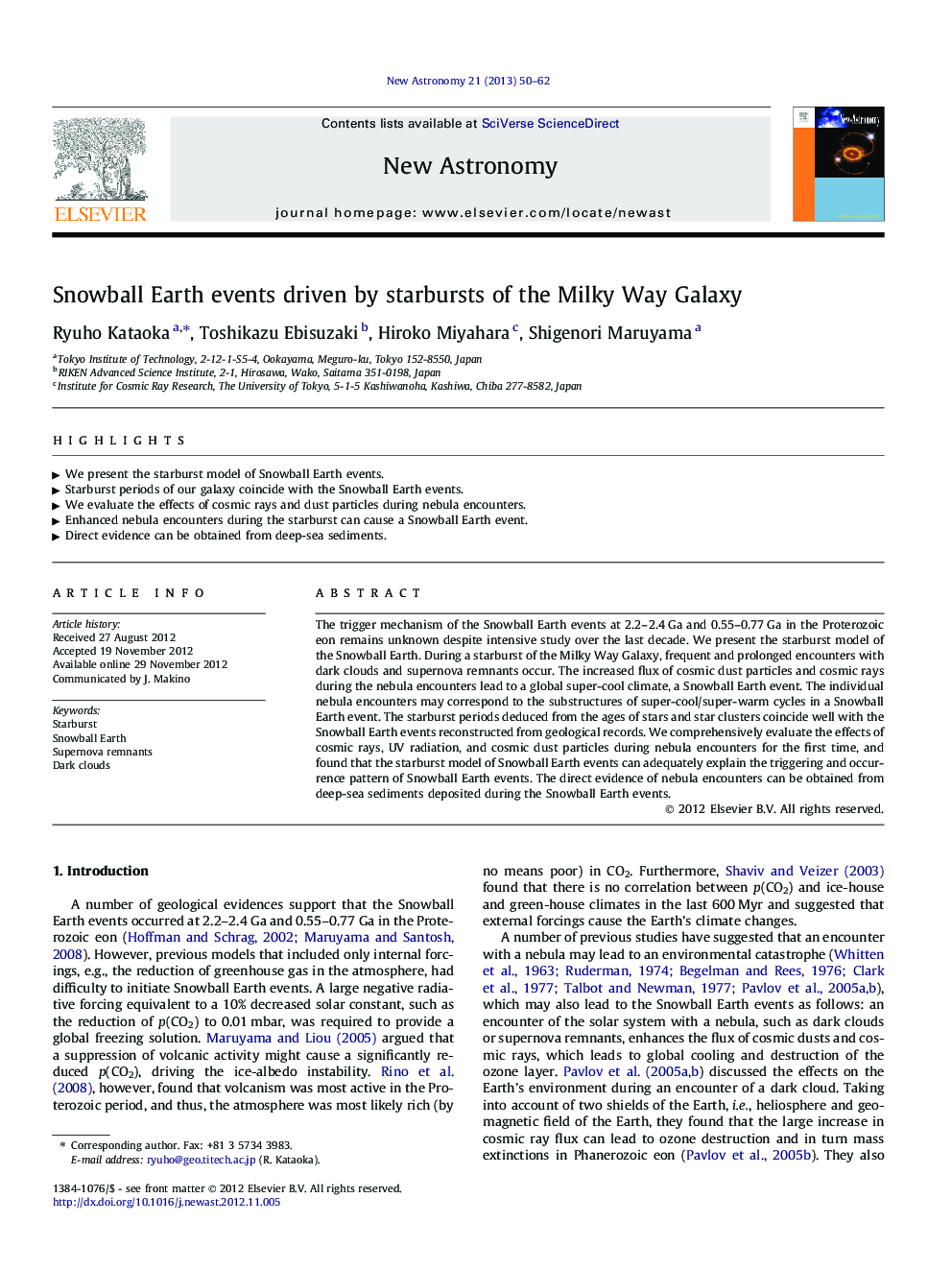| Article ID | Journal | Published Year | Pages | File Type |
|---|---|---|---|---|
| 1779101 | New Astronomy | 2013 | 13 Pages |
The trigger mechanism of the Snowball Earth events at 2.2–2.4 Ga and 0.55–0.77 Ga in the Proterozoic eon remains unknown despite intensive study over the last decade. We present the starburst model of the Snowball Earth. During a starburst of the Milky Way Galaxy, frequent and prolonged encounters with dark clouds and supernova remnants occur. The increased flux of cosmic dust particles and cosmic rays during the nebula encounters lead to a global super-cool climate, a Snowball Earth event. The individual nebula encounters may correspond to the substructures of super-cool/super-warm cycles in a Snowball Earth event. The starburst periods deduced from the ages of stars and star clusters coincide well with the Snowball Earth events reconstructed from geological records. We comprehensively evaluate the effects of cosmic rays, UV radiation, and cosmic dust particles during nebula encounters for the first time, and found that the starburst model of Snowball Earth events can adequately explain the triggering and occurrence pattern of Snowball Earth events. The direct evidence of nebula encounters can be obtained from deep-sea sediments deposited during the Snowball Earth events.
► We present the starburst model of Snowball Earth events. ► Starburst periods of our galaxy coincide with the Snowball Earth events. ► We evaluate the effects of cosmic rays and dust particles during nebula encounters. ► Enhanced nebula encounters during the starburst can cause a Snowball Earth event. ► Direct evidence can be obtained from deep-sea sediments.
